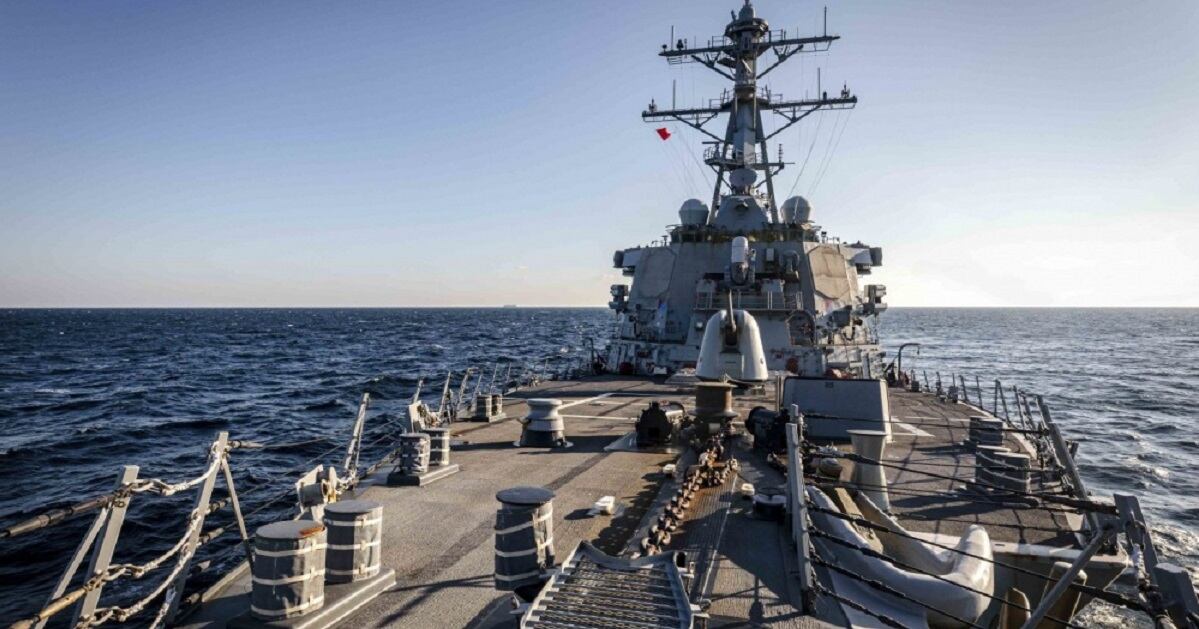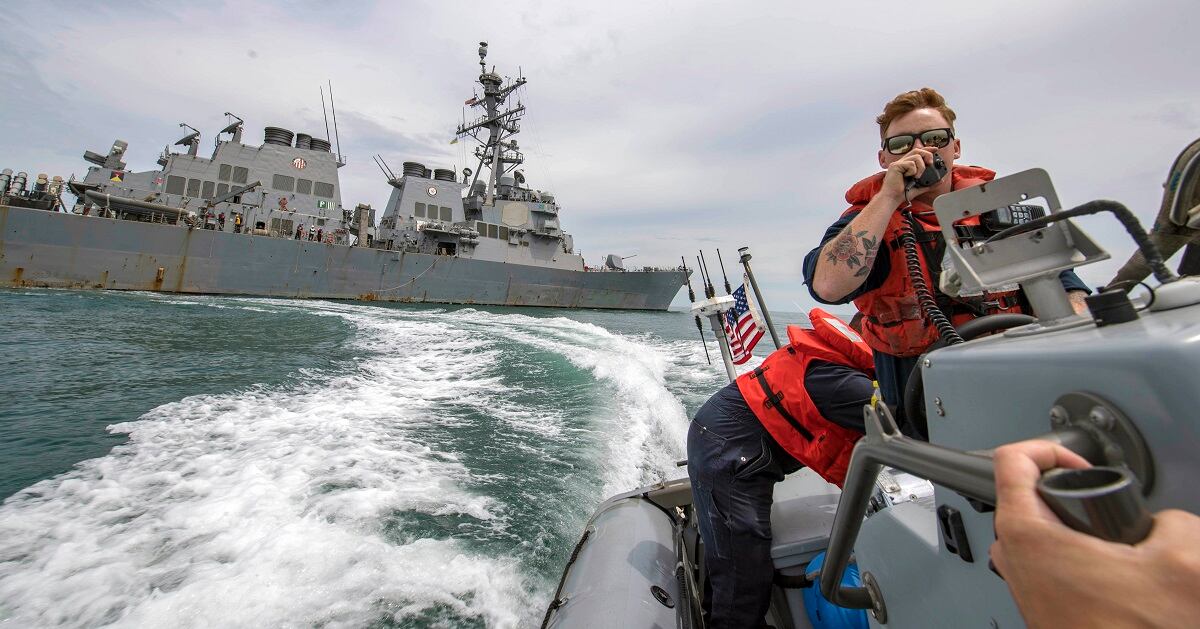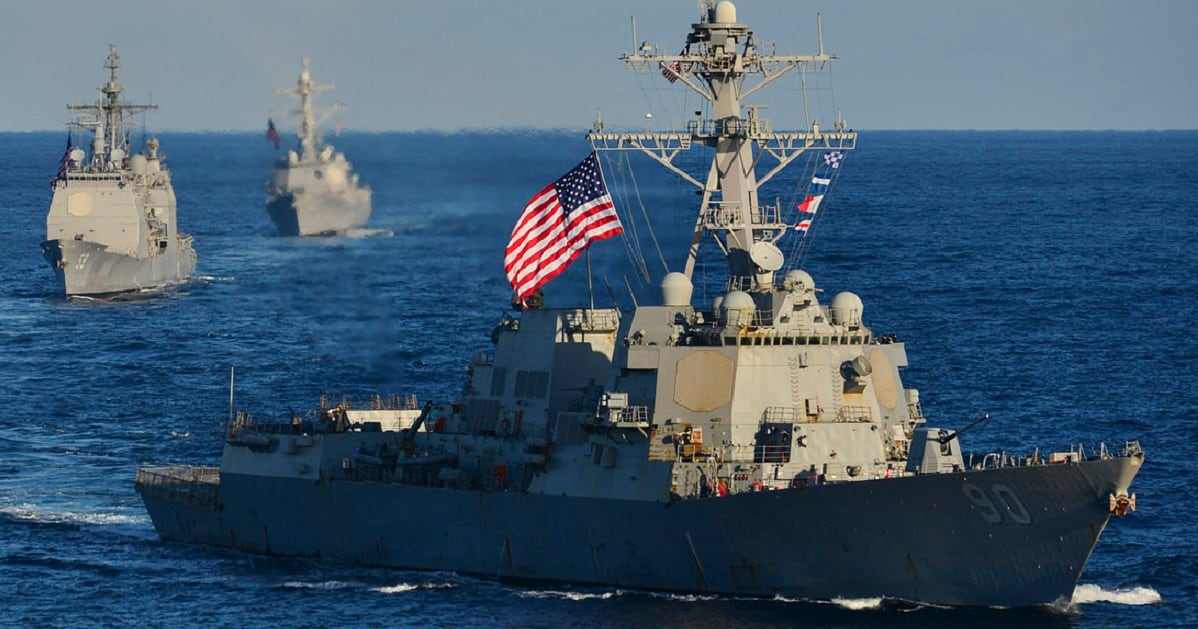MOSCOW — The U.S. Navy is denying a Russian Defense Ministry claim that a Russian warship on Friday prevented a U.S. Navy destroyer from attempting to intrude into Russia’s territorial waters in the Sea of Japan.
The dispute over what happened with the U.S. Navy destroyer Chafee came as Russia and China conducted joint naval drills in the area, and follows other close encounters involving Russian and Western warships. It appears to reflect Moscow’s intention to raise the stakes in deterring the U.S. and its allies from sending their ships on missions near Russian waters, as relations between Russia and the West are at a post-Cold War low.
In a statement from U.S. Pacific Fleet Public Affairs Friday afternoon (EST), the Navy pushed back against the Russian assertions.
“The statement from the Russian Defense Ministry about the interaction between our two Navy ships is false,” it states. “While USS Chafee (DDG 90) was conducting routine operations in international water in the Sea of Japan on Oct. 15, 2021, a Russian Udaloy-class destroyer came within approximately 65 yards of USS Chafee (DDG 90) while the ship was preparing for flight operations.
“The interaction was safe and professional.,” it continues. “Although Russia issued a Notice to Airman and Mariners (NOTAM/NOTMAR) in this area for later in the day, the NOTAM/NOTMAR was not in effect at the time of the interaction. At all times, USS Chafee conducted operations in accordance with international law and custom. The United States will continue to fly, sail, and operate where international law allows.”
In Russia’s version of events, the ministry said the Russian navy’s Admiral Tributs destroyer closely approached the Chafee to force it out of the area near Russian waters that were declared off limits to shipping due to the gunnery drills there as part of the Russia-China maneuvers.
It said the Russian vessel came close to the U.S. warship after it had ignored repeated warnings to leave the area in the Peter the Great Gulf. The ministry charged that after making “an attempt to cross the Russian sea border,” the U.S. warship changed course when the two ships were just 65 yards away from each other and sped away.
It denounced the U.S. destroyer’s maneuvers as a “crude violation” of the international rules on averting ships’ collision and a 1972 agreement between Moscow and Washington on preventing air and naval incidents.
It’s not the first time there has been a confrontation of sorts in the Peter the Great Gulf.
RELATED

On Nov. 24, 2020, the guided-missile destroyer John S. McCain conducted a freedom of navigation operation in the bay, which is part of the Sea of Japan — and Russia asserted the operation led to a tussle with a Russian destroyer.
According to the U.S. Navy, the McCain adhered to international law while challenging “Russia’s excessive maritime claims.”
There have been similar confrontations in the Black Sea, as well. In June, Russia said one of its warships fired warning shots and a warplane dropped bombs in the path of British destroyer Defender to drive it away from Black Sea waters near the Crimean city of Sevastopol. Britain denied that account, insisted its ship wasn’t fired upon and said it was sailing in Ukrainian waters.
RELATED

“We believe the Russians were undertaking a gunnery exercise in the Black Sea and provided the maritime community with prior warning of their activity,” the British Ministry of Defence said. “No shots were directed at HMS Defender and we do not recognize the claim that bombs were dropped in her path.”
Like most of the world, Britain recognizes Crimea as part of Ukraine despite the peninsula’s 2014 annexation by Russia.
June’s incident marked the first time since the Cold War that Moscow claimed to have used live ammunition to deter a NATO warship, underlining the rising threat of military collisions amid Russia-West tensions.
Moscow warned then that it is prepared to target intruding warships if they fail to heed warnings.

Russia’s relations with the West have sunk to the lowest levels since the Cold War, following Moscow’s annexation of Crimea, accusations of Russian interference with elections, hacking attacks and other tensions.
In other recent naval incidents, the Russian military said the British destroyer HMS Dragon intruded into Russian waters near Crimea in October 2020.
In the aftermath of those incidents, Russia rejected the U.S. and British arguments that their warships were exercising the right of so-called “innocent passage” under international maritime law.
The Russian warship’s maneuver during Friday’s incident appeared to indicate Moscow’s readiness to raise the stakes to prevent similar intrusions in the future.
The dangerously close encounter revived memories of a Cold War incident when a Soviet frigate bumped the U.S. Navy cruiser Yorktown in the Black Sea as it was making an “innocent passage” in Russian waters in 1988, damaging the U.S. warship.





